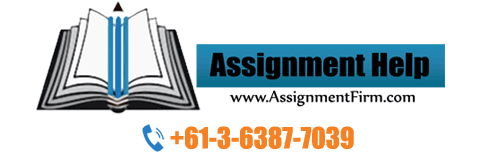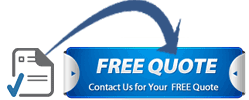Unit: ACC204 – Advanced Financial Accounting
Weighting: The assignment is worth 40% of the total unit weight.
Instructions: ACC204 Advanced Financial Accounting

- Students are required to cover
- Your answer must be both uploaded to Moodle in wordfile, no printed copy required.
- You need to
- Only include in formation in your appendixes that has been directly referred to in the body of your
- Include a title/cover page containing the subject title and code and the name, student id
- Please save the document as ACC204_T1_B1_first name_Surename_Student Number
Eg: ACC204_T3_B2_John_Smith_201800
You are required to finish each of these questions, total 40 marks. Please give the solutions in detail, show calculations and submit the solutions to Moodle using a single file, it can be Excel format, Word format or PDF format, no requirement on word limits. If any reference was used, please refer to Harvard style. Question 1 (10 marks), Question 2 (10 Marks), Question 3 (10 Marks), Question 4 (10 Marks).
- As explained within the Chapter 8, intangible asset, Australian accounting standards now prohibit goodwill from being subject to amortisation. Rather, there is a requirement that goodwill be subject to impairment testing. In relation to impairment testing of goodwill, Petersen and Plenborg (2010, p.420) state:
Many argue that an impairment test only approach seems a logical step in the development of accounting for goodwill. First, the underlying logic for removing the traditional amortization methodology is that the amortization on a straight-line basis over a number of years contains no information value for those using financial statements (Jennings et al., 2001). Moreover, IFRS 3 (IASB, 2004b) no longer requires that companies perform the almost impossible task of estimating the useful life of goodwill (Jansson et al. 2004). Second, the impairment approach should provide users of financial statements with better information, as goodwill is not automatically amortized (Colquitt and Wilson, 2002; Bens and Heltzer, 2005). Finally, goodwill impairment tests would be operational and capture a decline in the value of goodwill (Donnelly and Keys, 2002).
ORDER This ACC204 Advanced Financial Accounting Assignment NOW And Get Instant Discount
REQUIRED
You are to provide a clear argument as to why you agree or disagree with the perspectives provided in the paragraph above.
- On 1 July 2015 Kruger Ltd privately issues $1 million in six-year debentures, which pay interest each six months at a coupon rate of 6 per cent per annum. At the time of issuing the securities, the market requires a rate of return of 4 per cent. Consistent with the requirements of AASB9, the debentures are accounted for using the effective interest method.
Required
(a) Determine the fair value of the debentures at the time of issue (which will also be their issue price).
(b) Provide the journal entries at:
(i) 1 July 2015
(ii) 31 December 2015
(iii) 30 June 2016.
- Sun City Limited commences construction of a multi-purpose water park on 1 July 2014 for Pretoria Limited. Sun City Limited signs a fixed-price contract for total revenues of $50 million. The project is expected to be completed by the end of 2017 and Pretoria Limited controls the asset throughout the period of construction. The expected cost as at the commencement of construction is $38 million. The estimated costs of a construction project might change throughout the project—in this example, they do change. The following data relates to the project (the financial years end on 30 June):
| 2015 ($m) | 2016 ($m) | 2017($m) | |
| Costs for the year | 10 | 18 | 12 |
| Costs incurred to date | 10 | 28 | 40 |
| Estimated costs to complete | 28 | 12 | – |
| Progress billings during the year | 12 | 20 | 18 |
| Cash collected during the year | 11 | 19 | 20 |
Required
(a) Using the above data, compute the gross profit to be recognised for each of the three years, assuming that the outcome of the contract can be reliably estimated.
(b) Prepare the journal entries for the 2015 financial year using the percentage-of-completion method.
(c) Prepare the journal entries for the 2015 financial year, assuming the stage of completion cannot be reliably assessed.
- Anderson Pty Ltd is an Australian diversified industrial company with its major business activity being to manufacture flotation devices for babies and toddlers. Over the past decade, the business has been very profitable and the directors, Simon Anderson and Lisa Anderson, have kept payment of dividends to a minimum to allow the company to diversify into other activities. The following is a list of property, plant and equipment held by the company:
| Investments in companies | Carrying Value ($) | Current fair value ($) |
| Property, plant and equipment | ||
| Factory (NSW) | ||
| Land | 100 000 | 150 000 |
| Buildings | ||
| – Cost | 70 000 | 80 000 |
| – Accumulated depreciation | (20 000) | – |
| Factory (Qld) | ||
| Land | 150 000 | 120 000 |
| Buildings | ||
| – Cost | 125 000 | 70 000 |
| – Accumulated depreciation | (45 000) | – |
Mr Anderson informs you that the directors intend to revalue the property, plant and equipment during the year. The company has not revalued any assets in the past.
Required
(a) How would you account for the revaluation of the above assets?
(b) What would the relevant journal entries be?
ORDER This ACC204 Advanced Financial Accounting Assignment NOW And Get Instant Discount
Get COAC216 Cost Accounting Assignment written by experts.



